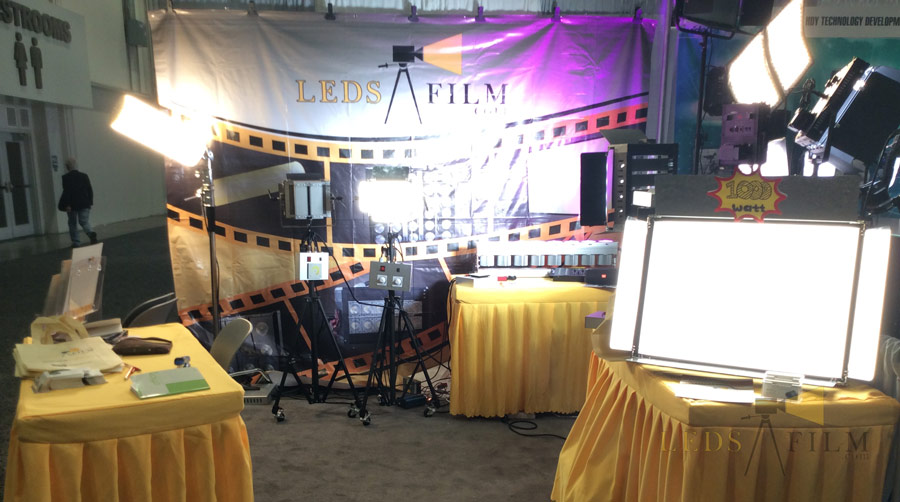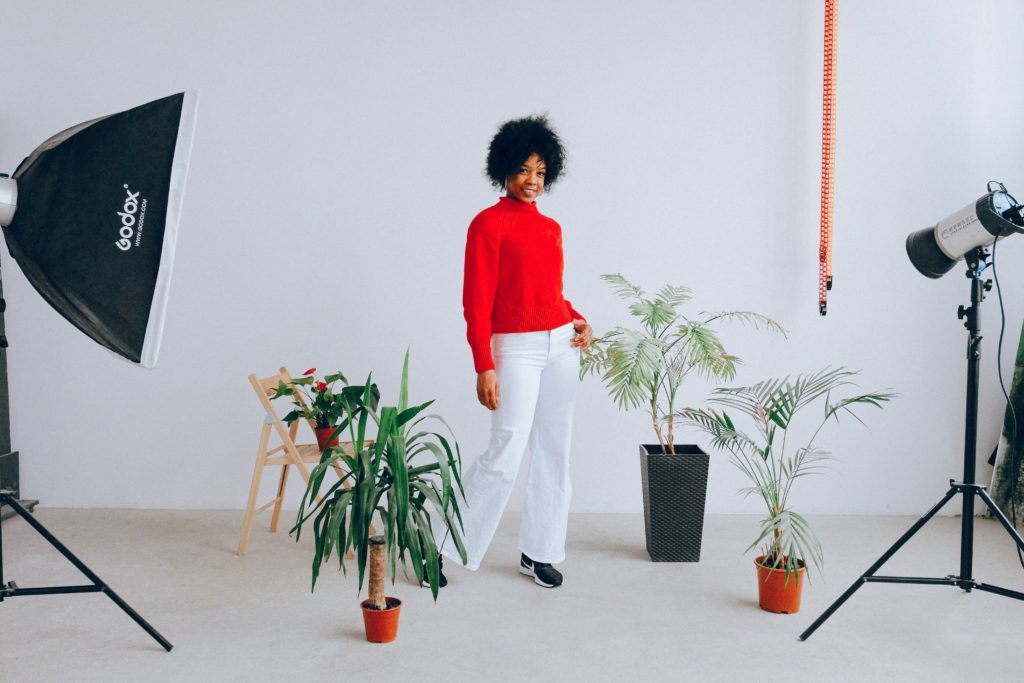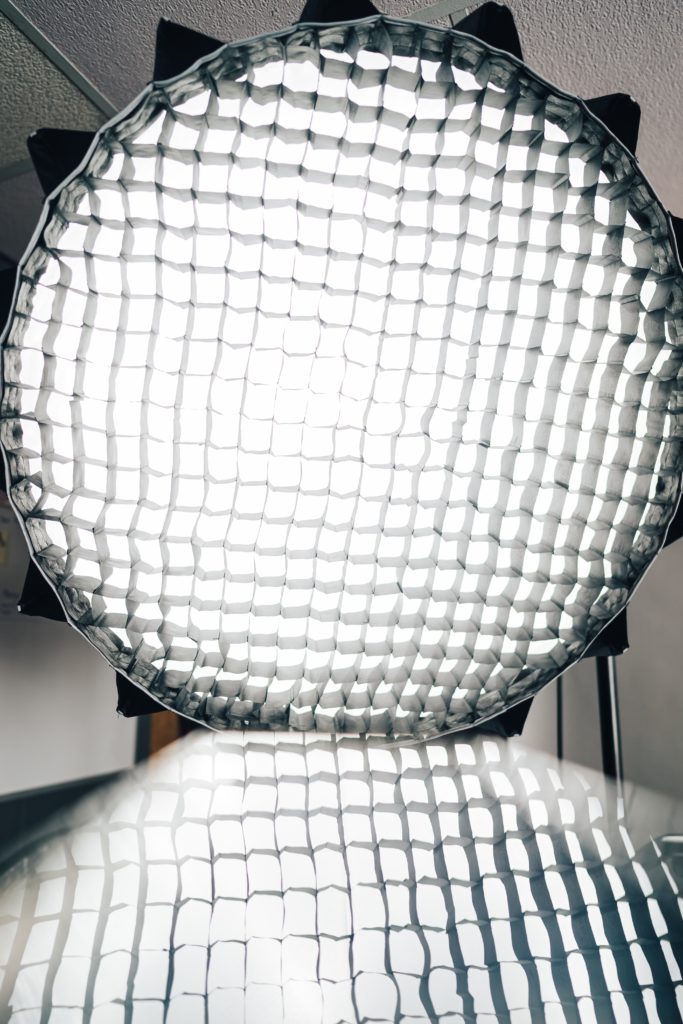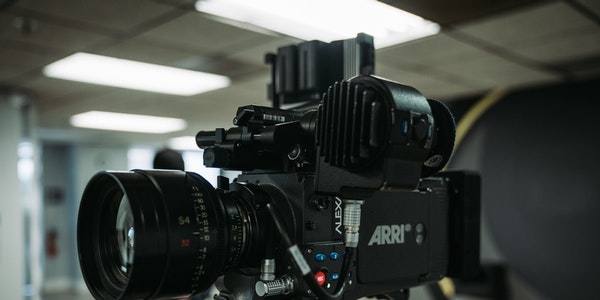Table of Contents
Lighting art, lighting technology and combination
No matter for the needs of technology or art, light is the source of all visual arts, film and television art is the art of light, and light is the “soul” of film and television art. Without the existence of light, all visual arts can not be mentioned. Light and color are not only sensitive factors that affect the material world, but also a kind of aesthetic experience and aesthetic consciousness of creators Because light and color create rhythm, create atmosphere, form different artistic styles, through light and color show, depict characters, express the theme.
TV lighting is the expression of the most three-dimensional space, not only to improve the clarity of the picture, but also the vivid expression of art. We can use the size of light ratio and the change of color to show all levels of the object, so as to achieve the artistic purpose and artistic feeling of modeling.
In the actual second creation, lighting can block the secondary objects in the painting, highlight the main body, have nothing to do with the plot, weaken, guide the audience’s visual attention, beautify or uglify the characters.
Lighting can truly reproduce life and give the audience a sense of reality. For example, use the time flow of light shows, seasonal changes, and weather changes to illustrate the environment and scenes.
Light has the function of psychological realization and freehand brushwork. Through the change of light and shade and color, it can make people’s emotions more vivid and reveal people’s personality and psychological state.
The freehand brushwork of light (symbolism, praise, direction, interest) can not only render and set off the environmental atmosphere (cheerful, warm, mysterious, thrilling, terrifying, lonely, elegant, solemn) but also deepen the connotation of the work.
In modern programs, the use of light can also stimulate different emotions of the audience, which is the integration of the audience’s observation psychology and program content, and cause resonance.
Flat light high-tone method
Flat light high-tone method gives a relaxed, concise and cheerful atmosphere, which makes people feel clean, elegant, beautiful and thorough. The lighting mainly uses soft flat light, with strong objectivity. It mainly gives basic lighting to the environment, reflects the pure color of the object itself, and shows the external characteristics of the object and the environment. The three-dimensional sense and texture of the object mainly depend on their own light tone changes. Because the object has no shadow, it is eye-catching and conspicuous. A large number of neutral gray to white tone transition, constitute a high-profile picture.
Three point light distribution method
A classical method of light distribution. It uses the main light, auxiliary light and backlight to distribute light to the subject, and consciously creates shadow on the subject’s face to make it have light and dark changes, but the overall tone does not exceed the dynamic range of the camera, and it can also make the subject and the background distinct. This kind of light distribution method does not fix the three kinds of light in a certain position.
It determines the position of the main light and the auxiliary light according to the face shape of the subject. In fact, besides the three kinds of light, it also uses some decorative light to cover up or highlight some characteristics. This lighting method is suitable for a single host lighting, cheap photography equipment, the number of subjects, light efficiency is not easy to control.
Realistic light, freehand light
Realistic light and freehand light are two different ways of expression in TV lighting.
Realistic light is mainly used to express the concept of time or environment (such as sunlight through doors and windows, lightning light, flame light, indoor lighting, candlelight, bonfire light). It is close to life, has strong credibility to the audience, and the light is readable. It is conducive to realistic light, which can make the atmosphere of the picture stronger To exaggerate the emotions and atmosphere of the characters and express their emotions. Increase the interest of the picture in art.
Freehand brushwork sometimes shows some kind of symbol, metaphor, implication, some subjective idea of the creator, reflects the specific emotions of the characters, and implies the inner activities of the characters, which not only makes the picture more profound, but also further deepens the theme of the work.
Color Temperature, Meaning, Function, Balance and Low CCT
Color temperature is the concept of spectral component of light source, which is a sign of light color, not the temperature of pipeline, in Kelvin (k). The function of color temperature is a physical quantity used to define the color of light source in lighting optics. The balance of color temperature generally refers to: the color temperature of the light source used is consistent with that of the camera; the color temperature of several different light sources in the same scene is consistent; the color temperature of the bright part of the subject in sunlight is consistent with that of the light auxiliary light used in the dark part, etc.
The ways to balance the color temperature are as follows: 1. Balance the color temperature of light source and camera, 2. Balance the color temperature of several different light sources in a scene, 3. Under the paper light illumination of natural light, the dark part of the subject sometimes needs to add auxiliary light illumination to express and emphasize the dark part level.
The standard sunlight color temperature is 5400k and the fluorescent light color temperature is 3200K. Reduce color temperature: add orange red paper in front of high color temperature light source, improve color temperature: add blue paper in front of low color temperature light source.
Without the interference of external light source, it is necessary to add a blue filter in front of the 3200K tungsten filament lamp to improve the color temperature of the lamp to more than 5000K.
Lighting purpose and task
Lighting is an important means to complete the television production technology, and then realize the picture art modeling. Its main tasks are as follows:
- To meet the basic requirements of illuminance in the early stage of video recording technology,
- To use the artistic modeling of light King City picture,
- To highlight the main scenes and main characters,
- To reproduce the atmosphere of the environment and emphasize the concept of time,
- To meet the needs of comedy performance,
- To meet the needs of visual language rhetoric.
Classification, advantages and functions of reflectors
Reflectors are generally divided into two types: soft reflective and unidirectional reflective. The former light quality is scattered light, no projection, delicate level and soft effect, while the latter light quality is hard light, obvious projection and long projection distance.
The advantages are:
1) normal light color,
2) direct or indirect use of sunlight,
3) simple production and convenient carrying.
The functions are as follows:
- Soft contrast and realistic dark level,
- Correcting color deviation and striving for color unification,
- Moving light effect,
- Correcting insufficient sunlight to achieve lighting balance,
- Simulating real effect light,
- Making base light in the field.
Characteristics and functions of spotlight
Spotlight lamps include spotlight, return light, tracking light and so on. These lamps have high luminous intensity and brightness, and can form obvious shadow on the surface of objects. They play a “leading role” in studio lighting and are often used as the main light and contour light of characters or scenes. This kind of lamp belongs to hard light type.
- The distance of ray casting is far, which has some characteristics of sunlight,
- It can be used as “surface” lighting to explain the number and scale of people or scenes. You can also do “point on” lighting to reflect the key points of lighting and highlight the part of the scene or characters,
- The color temperature of the light is normal, and the surface color of the object is pure, which can obtain good picture effect; 4. After adding soft paper or frosted glass in front of the lamp, it can be used as mountain light, which can be used for multiple purposes.

Light ratio and tone
Light ratio refers to the ratio of brightness value or illuminance value between light and dark formed on the subject. The light ratio determines the brightness and contrast of the picture, and determines the formation of different tones and tones of the picture, so as to show different modeling effects and artistic atmosphere.
Color, also known as hue, is the most basic feature of color. Color is used to show the main difference between colors or the difference between color and achromatic. (for example, red, orange, yellow, green, blue, indigo violet and other colors in the spectrum indicate different colors) different colors can be marked by the corresponding wavelength of their spectral colors. Different wavelengths of light to the human eye caused by color stimulation. In artistic creation, color is often divided into two categories: warm tone and collar tone. So color is also called hue.
Hue, is the most basic feature of color. It is also known as tone in film and television works. It is the general name of color in film and television pictures, or a kind of configuration. Generally, a work should be dominated by a certain color, so that the picture has a certain color tendency. The factors that determine the hue of the picture are: the color characteristics of the subject, and the lighting conditions. The hue can be divided into red, green, yellow, blue, etc. according to the color. According to the brightness, it can be divided into high tone, dark tone and middle tone. According to the cold and warm, it can be divided into cold tone, warm tone and middle tone. The hue of a work should be unified and harmonious.
Color rendering and saturation
The degree of light source’s rendering of object’s color is called color rendering, that is, the fidelity of color. The light source with high color rendering has a better representation of color, and the color we see is closer to the natural primary color. The light source with low color rendering has a worse representation of color, and the color deviation we see is also larger.
The light source can restore the solid and colored characteristics of objects. Due to different light sources, the colors of objects illuminated by light sources are not the same.
Saturation is sometimes called color purity. Saturation paper color bright degree, can also refer to a certain color and the same brightness of the achromatic (black and white gray) degree of difference. If a color contains more color components and less achromatic components, the color will be saturated; on the contrary, if it contains less color components and more achromatic components, the color will focus on the unsaturated state.
The factors that affect the color saturation are: 1 different lighting, the color saturation of the object will have different changes. The surface structure of the object also has a direct effect on the saturation. 3. The farther the object is from the point or lens, the lower the color saturation will be due to the increase of the medium in the space. 4 different seasons also affect the color saturation. The relationship between color saturation and lightness is relative, sometimes the lightness is high but the saturation is not high.
Brightness and illumination
Brightness represents the intensity of light emitted from the surface of an object. The intensity of light emitted per unit area is the brightness of the surface of the object. Unit ridge per square meter becomes nit (NT) 1nt = 1 ridge / m2. Brightness is an objective response to the light and dark levels of a picture, and it is also one of the factors of modeling and composition. The brightness of a scene depends on the strength of the light source. The correct expression of the brightness of a scene is not only of technical significance, but also of harmonious expression of the hue and tone of the picture in art. The brightness is related to the luminous direction of the subject. There are two factors that determine the brightness of an object: its ability to reflect strong light and its ability to reflect weak light.
Illuminance refers to the luminous flux received by the surface of the illuminated object per unit area, that is, the degree to which the surface of an object is illuminated, and the unit is lux. The light emitted to an object depends on the power and design of the light source and the distance from the object.
There are the following rules between them:
- The illuminance is proportional to the luminous intensity of the light source. When the distance is constant, the stronger the light source is, the greater the illuminance is,
- The illuminance on the surface of the object is related to the direction of light projection, the more vertical the intensity is,
- Under the condition of point light source, the illuminance on the surface of the object is Inversely proportional to the square of the distance from the light source.
